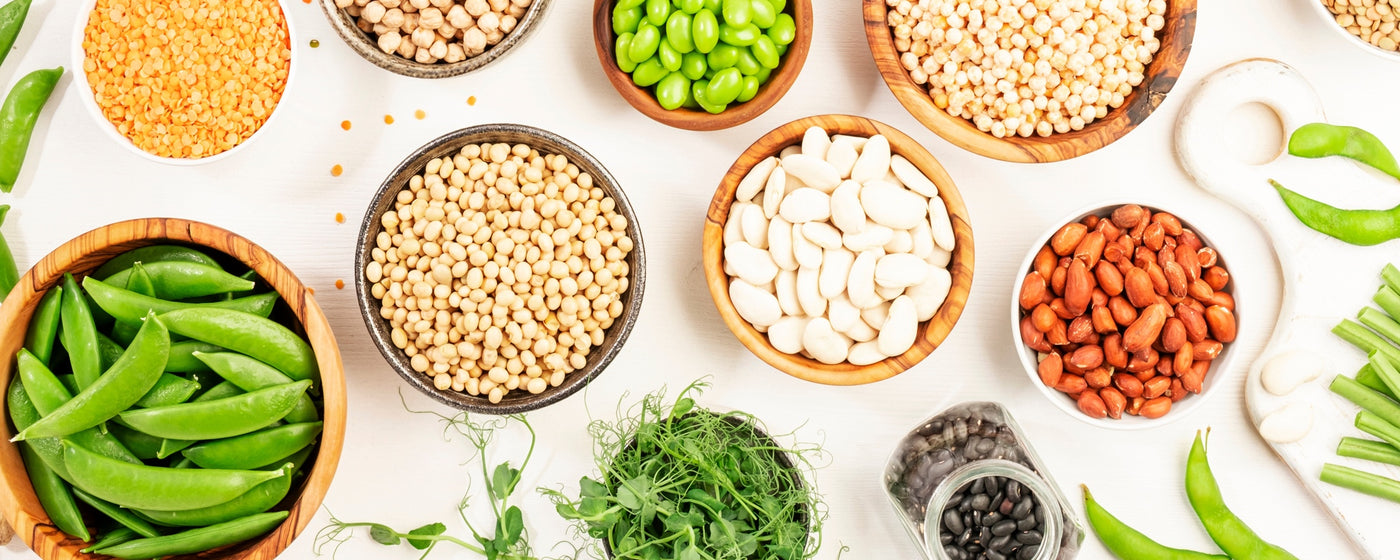| All Beans ⟐ Bush beans ⟐ Fava & broad beans ⟐ Lima beans ⟐ Pole & runner beans |

|
BUSH BEANS
|
POLE BEANS
|

| Planting & Harvesting Beans (source) |
| Beans can be grown in average soil, almost anywhere in the United States. They grow best if the soil is well drained and the summer is consistently warm. Seeds will rot in the ground in cold, damp weather. Since Beans are subject to downy mildew, they should not be grown where there are cold summer fogs. When to Plant After the soil is sufficiently warm - temperatures above 75 degrees. Beans are easily killed by frost. Plan on an average of 10-20 plants per person. Some gardeners recommend pre-soaking seeds prior to planting, but research indicates soaked seeds absorb water too quickly, causing the outer coats to spill out essential nutrients, which encourages seed rot. Yields can increase 50-100% by inoculating with Rhizobium bacteria. To inoculate, simply roll seeds in the powder prior to planting.  How to Plant Bush Beans: Germination in 7 days. Plant seeds 2 inches apart, 1 1/2 inches deep in rows 2 feet apart. Thin to about 6-8 plants per foot of row. Bean plants produce the bulk of their crop for a 2 week period. Rather than plant the entire row, sections should be planted at 2 week intervals until mid-July or 8 weeks before the first killing frost. This will assure a steady crop all summer. Harvest: Average 50 days. Wax, Lima Beans: Germination in 10 days. Plant seeds 3-4 inches apart, with eyes down, 1 inch deep in rows 2 feet apart. Two plantings a month apart produce a prolonged harvest. Harvest: Average 65-75 days. Pole Beans: Germination in 8 to 14 days. Set 3 rough barked, 6 foot poles in the ground, tepee fashion, and tie together at the top. Leave 3 to 4 feet between the pole groups. Make a hill at the base of each pole, enriched with compost or well-rotted manure, and plant 6-8 seeds in each. After the second pair of true leaves appear, thin to 3 plants per pole. With regular harvesting, the pole beans should bear all summer. Harvest: 65 days. How to Harvest Watch plants carefully as beans start to form and harvest every 2-3 days. Beans are ready to pick when the pods are well formed and rounded and snap readily if bent in half. Wax beans should have a good yellow color. Be sure to lift up the bean plants and look under the foliage to pick every ripe bean. This will promote a continued crop. If beans are left on the plants too long, the seeds overdevelop and the pods become tough. Poorly formed pods are caused by too dry soil, poor infertile soil, or insect damage. Lima beans are picked when the pods are well filled and still green in color. If the pods are yellowing, the beans are too mature and can be left on the vine and picked later to use as dry beans. |
| Shop all Bean Seeds ⟐ Bush beans ⟐ Fava & broad beans ⟐ Lima beans ⟐ Pole & runner beans |













































